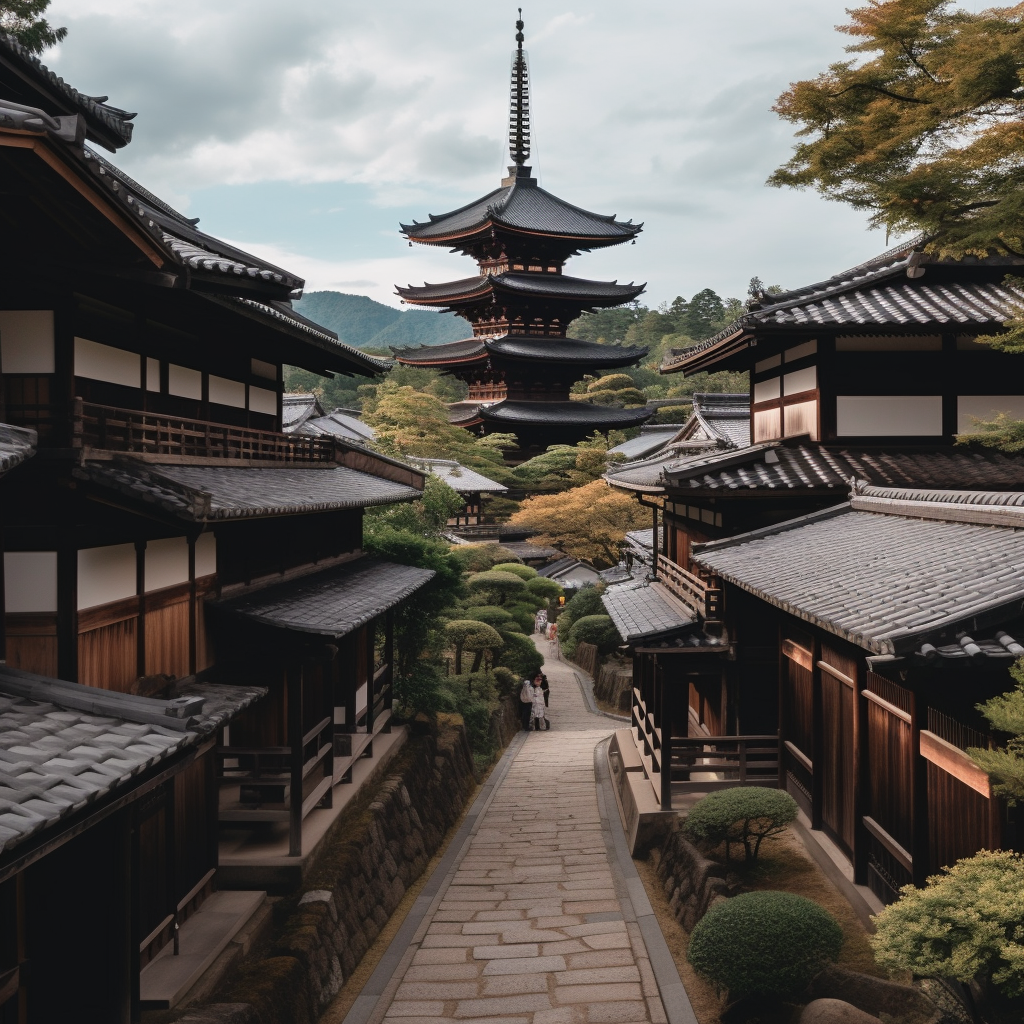Japan is a country steeped in history, and the ancient capitals of Kyoto, Nara, and Kanazawa hold a special place in the hearts of many travelers. In this 2000-word blog post, we’ll explore the rich history, beautiful architecture, and enchanting culture of these three cities.
Kyoto: The City of a Thousand Temples
Kyoto, the former capital of Japan, is often referred to as the “City of a Thousand Temples.” With over 1,600 temples and shrines, it is a treasure trove of Japanese culture and history. The city is also renowned for its beautiful natural scenery, including the vibrant cherry blossoms in spring and the stunning autumn foliage.
Kinkaku-ji: The Golden Pavilion
Kinkaku-ji, or the Golden Pavilion, is one of Kyoto’s most iconic landmarks. The pavilion is covered in gold leaf and sits on the edge of a beautiful pond, creating a stunning reflection. Originally a villa for a shogun, Kinkaku-ji was later converted into a Zen temple after his death. The serene atmosphere makes it a must-visit destination in Kyoto.
Fushimi Inari Taisha: The Shrine of a Thousand Torii Gates
Fushimi Inari Taisha is an important Shinto shrine dedicated to Inari, the god of rice and prosperity. The shrine is famous for its thousands of vermilion torii gates, which create a tunnel-like path up the mountain. Visitors can hike the picturesque trail to the summit, taking in the beautiful scenery and countless smaller shrines along the way.
Nara: The Birthplace of Japanese Culture
Nara, the first permanent capital of Japan, is a city steeped in history and spirituality. With numerous temples, shrines, and historical sites, it offers a unique glimpse into Japan’s past.
Todai-ji: The Great Eastern Temple
Todai-ji is one of Nara’s most famous temples, and it’s home to the world’s largest bronze statue of the Buddha Vairocana. Known as the Great Eastern Temple, it is a UNESCO World Heritage site and a symbol of Nara’s spiritual significance. The imposing structure, surrounded by lush greenery, is a must-see for any visitor to the city.
Nara Park: A Deer Sanctuary
Nara Park, located in the heart of the city, is a sprawling green space home to over 1,000 semi-tame deer. The deer are considered messengers of the gods in the Shinto religion, and they roam freely throughout the park. Visitors can feed and interact with the friendly deer, making for a memorable experience.
Kanazawa: A City of Traditional Crafts and Samurai Heritage
Kanazawa, known for its well-preserved Edo-era districts, is a hidden gem on Japan’s west coast. The city boasts a rich samurai heritage and is famous for its traditional crafts, such as gold leaf production and Kutani pottery.
Kenrokuen: One of Japan’s Three Great Gardens
Kenrokuen is a stunning landscape garden, considered one of the “Three Great Gardens of Japan.” With its meticulously maintained grounds, picturesque ponds, and seasonal beauty, it’s a must-visit destination for any nature lover.
Higashi Chaya District: A Glimpse into the World of Geisha
The Higashi Chaya District is a well-preserved geisha district, featuring traditional wooden teahouses where geisha have entertained guests for centuries. Visitors can stroll the atmospheric streets, sample local sweets, and even enjoy a traditional tea ceremony in one of the teahouses
Nagamachi Samurai District: A Walk Through History
Nagamachi is a beautifully preserved samurai district, where you can experience the atmosphere of the Edo period. With its narrow streets and well-maintained earthen walls, Nagamachi offers a glimpse into the lives of the samurai. Don’t miss the Nomura-ke, a restored samurai residence, which provides an intimate look at the lifestyle of Japan’s warrior class.
21st Century Museum of Contemporary Art: A Fusion of Past and Future
The 21st Century Museum of Contemporary Art is a must-visit destination for art lovers. The museum showcases an impressive collection of contemporary art from both Japanese and international artists. The striking circular building, with its glass walls, adds a modern touch to the city’s historic landscape.
Tips for Traveling to Japan’s Ancient Capitals
- Transportation: Japan’s efficient train system makes it easy to travel between Kyoto, Nara, and Kanazawa. The Japan Rail Pass is an excellent investment for travelers planning to visit multiple cities.
- Accommodation: Traditional ryokans (Japanese inns) offer a unique lodging experience, complete with tatami mat rooms, communal baths, and kaiseki dinners. Be sure to book in advance, especially during peak seasons.
- Cultural Etiquette: When visiting temples and shrines, be respectful of the customs and traditions. Wear modest clothing, and follow any posted guidelines.
- Language: While English is spoken in many tourist areas, learning a few basic Japanese phrases can enhance your travel experience.
- Seasons: Each season offers a unique experience in Japan’s ancient capitals. Spring brings cherry blossoms, summer features colorful festivals, autumn showcases vibrant foliage, and winter offers snow-covered landscapes. Plan your trip according to your preferences.
By exploring Japan’s ancient capitals of Kyoto, Nara, and Kanazawa, you’ll gain a deeper understanding of the country’s rich history, beautiful architecture, and enchanting culture. Don’t miss the opportunity to experience the timeless beauty of these captivating cities.

コメントを残す